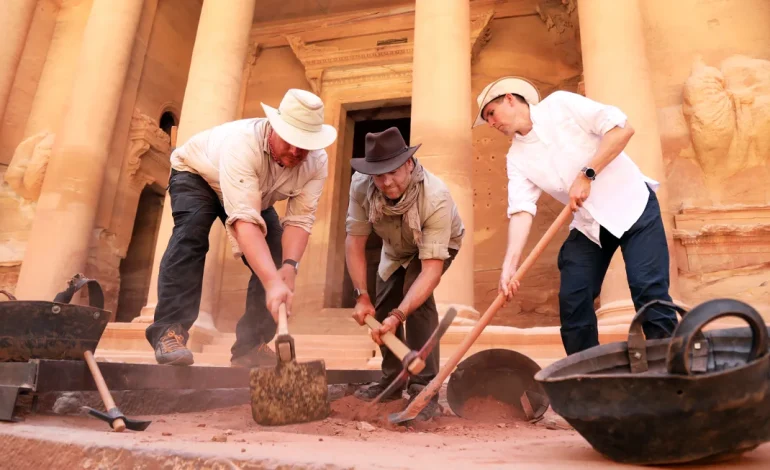Ancient Tomb Unearthed Beneath Petra’s Treasury Offers Glimpse into Nabataean Life

A remarkable discovery has been made at the heart of the ancient city of Petra, Jordan, revealing a well-preserved tomb filled with human remains and artifacts dating back at least 2,000 years, CNN reports.
This hidden chamber, nestled beneath the iconic Khaznah, or Treasury, offers a rare glimpse into the lives of the Nabataeans, the ancient Arabian nomads who once ruled this desert kingdom.
Archaeologists, led by Dr. Pearce Paul Creasman, Executive Director of the American Center of Research, unearthed the tomb following years of speculation about hidden chambers beneath the Treasury. Utilizing ground-penetrating radar, the team confirmed the existence of similar features on both sides of the monument, leading to the discovery of the tomb in August.
While many tombs in Petra are found empty or disturbed, this newly uncovered chamber contained intact skeletal remains and an impressive array of grave goods, including bronze, iron, and ceramic artifacts. The discovery is significant, as it represents the largest collection of human remains found in one place within Petra, according to researchers.
The tomb’s contents offer valuable insight into Nabataean burial practices, which remain shrouded in mystery. While literature often portrays Nabataean society as more egalitarian, with kings integrated with lower classes, the tombs discovered so far don’t show significant differences between royal and regular burials.
The newly discovered tomb’s location beneath the Treasury raises further questions about the monument’s purpose. Although the most popular theory suggests it served as a mausoleum, no skeletal remains have ever been found within the building itself.
Among the artifacts found in the tomb are several vessels, including a ceramic chalice clutched by one skeleton, strikingly similar in shape to the Holy Grail. The artifacts are remarkably well-preserved, showcasing the Nabataean craftsmanship. However, the human remains, while intact, are in more delicate condition, likely due to the humidity, seasonal floods, and the porous sandstone surrounding the tomb.









The latest news in your social feeds
Subscribe to our social media platforms to stay tuned